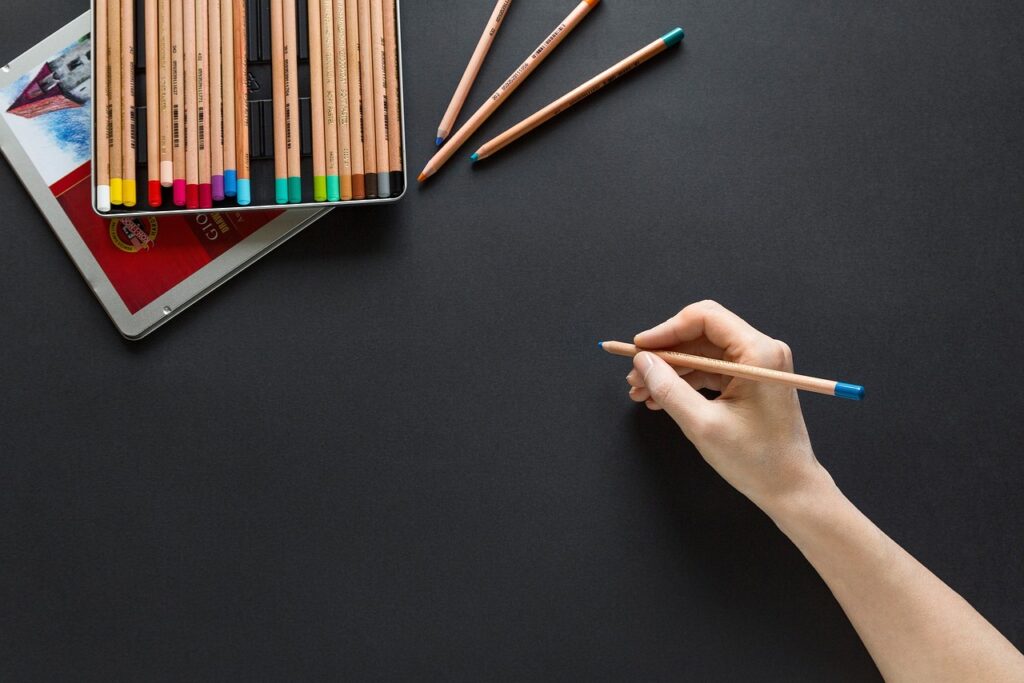
Pencil drawing remains one of the most accessible yet profound forms of artistic expression. Whether you’re a seasoned artist or just picking up a sketchbook for the first time, the simple pencil offers endless creative potential.
From fine details to bold, dramatic shading, pencil art has a unique way of capturing the beauty of both everyday life and imaginative scenes. Using the right tools, such as charcoal pencils and shading pencils, can transform a basic sketch into a captivating piece of pencil artwork.
The Timeless Appeal of Pencil Art
Pencil drawing has been cherished for centuries. The versatility of pencil art allows artists to create everything from quick sketches to highly detailed portraits. One of the great appeals of pencil art is its simplicity — with just paper and a pencil, you can start creating.
For beginners, starting with pencil drawing simple techniques such as basic shapes, lines, and shading builds a strong foundation.
Unlike other mediums that require extensive setups or drying times, pencil drawing offers immediate results. Whether you’re capturing the soft folds of fabric, the intricate details of a landscape, or the subtle expressions of a face, the pencil provides precision and control.
Exploring the Tools: Charcoal Pencils and Shading Pencils
To elevate your pencil artwork, using the right tools is essential. While standard graphite pencils are excellent for clean lines and delicate shading, charcoal pencils add a rich, velvety texture that brings dramatic depth to your drawings.
Charcoal pencils are perfect for expressive sketches and bold contrasts, making them a favorite for figure drawing and portraits.
On the other hand, shading pencils come in a range of hardness levels, from soft (dark) to hard (light). Using a variety of shading pencils allows artists to build gradients and layers, giving their pencil artwork a more lifelike and dimensional appearance.
Blending techniques, such as smudging with a tortillon or blending stump, can enhance transitions between light and shadow, adding realism to your drawings.
Combining both charcoal pencils and shading pencils in your work provides endless possibilities. You can achieve delicate, light-filled areas and deep, moody shadows within the same piece, creating dynamic and visually striking results.
(Artists Charcoal Drawing Set | 24-piece Gift Tin Set | The Ideal Starter Set)
Pencil Drawing Simple: Starting with the Basics
For beginners, focusing on pencil drawing simple subjects is the best way to build skills. Start with everyday objects like fruit, cups, or flowers. These simple forms help you practice observation, proportion, and basic shading techniques.
Learning how light interacts with an object is crucial in pencil art. Use shading pencils to experiment with highlights and shadows, and observe how different pencil grades affect your drawing’s tone and texture.
Practicing gradient scales is also helpful — this teaches you how to transition smoothly from light to dark, a fundamental skill for all pencil artists.
Techniques to Enhance Your Pencil Artwork
Mastering a few essential techniques can take your pencil artwork to the next level:
- Hatching and Cross-Hatching: Use parallel or intersecting lines to build up tone and texture.
- Blending: Smooth out pencil strokes using a blending stump or tissue for softer transitions.
- Layering: Gradually build layers of graphite or charcoal to achieve depth and complexity.
- Eraser Techniques: Use kneaded erasers not just for corrections but to lift graphite and create highlights.
- Contrast and Composition: Balance dark and light areas to guide the viewer’s eye and enhance your composition.
These techniques apply whether you’re working on pencil drawing simple exercises or developing more advanced pencil artwork.
The Enduring Beauty of Pencil Art
Pencil art continues to thrive in the modern art world. From quick urban sketches to hyper-realistic portraits, the possibilities are truly limitless. Whether you’re using soft charcoal pencils for bold drama or fine shading pencils for delicate details, pencil drawing offers an expressive and rewarding creative outlet.
Moreover, pencil drawing is perfect for artists of all skill levels. It’s a portable, affordable, and endlessly adaptable medium.
With practice, even the simplest sketches evolve into stunning pencil artwork that reflects your unique style and vision.
In a world of digital design and fast-paced visuals, pencil art stands as a testament to the enduring power of simplicity and skill. Whether you’re just starting with pencil drawing simple sketches or diving into complex, layered pencil artwork, this classic medium offers endless opportunities for growth and expression.
Explore the depth of charcoal pencils, experiment with shading pencils, and let your creativity flow freely on the page. Your next masterpiece is just a pencil and piece of paper away!
